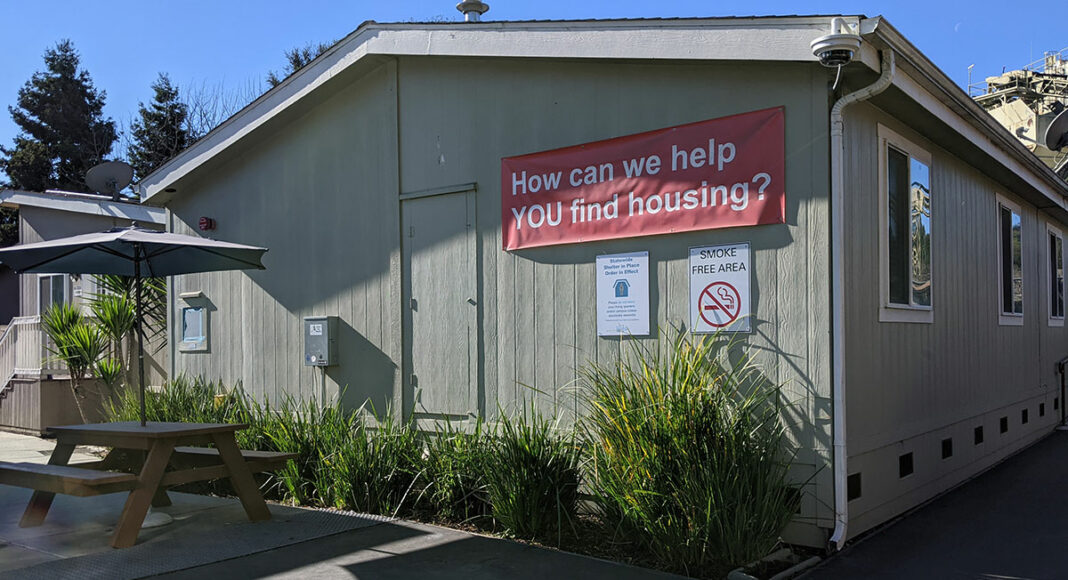The days are numbered for the 40-bed Page Smith Community House, which sits on the Housing Matters campus, Santa Cruz’s main shelter and services hub.
The positive news is that Housing Matters and its partner Envision Housing have much bigger plans for that site. In the coming years, it will become the home of a 120-unit permanent supportive housing complex, a game changer in terms of housing stability for the county’s most vulnerable residents.
In the nearer term, Housing Matters, and Envision Housing, a local development consultant, want to take their accessible housing mission one step further. Sibley Simon, the executive director of Envision Housing, is getting the word out that the homes that make up the Page Smith Community House are available for pickup.
Simon is hoping another group with available land will have a good use for the small houses—preferably providing a safe space to those who are unsheltered.
“The homes are owned by a nonprofit whose mission is helping people who are homeless,” says Simon, who served as board treasurer for Housing Matters. “If we can give them to a different group that is broadly within that mission, then they are preserving that mission.”
There are eight of these mobile homes, ranging in size from 1,300 square feet to 2,040 square feet. Interested parties will have until this upcoming winter to call dibs on the homes, cover the moving costs and have them hauled them away.
Housing Matters Executive Director Phil Kramer says it will take some work to disconnect the houses from some of the infrastructure, like plumbing, electricity and stairs. But it’s doable, and it will be worth it, he says.
“They could be transported off campus in a similar way that they were transported onto campus, which is on the back of a big flatbed truck. We’d really love to see them go somewhere. It would be a nominal cost for an interested nonprofit or provider,” Kramer says.
Simon says a backup plan would be to simply sell the Page Smith homes and put the proceeds toward Housing Matters and its programs, but he and Kramer would prefer to see the units remain available as housing for people experiencing homelessness somewhere in the county.
“It’s just better,” Simon says.
The supply of emergency beds for people experiencing homelessness is constantly in flux, and that’s particularly been the case this past year. The Covid-19 pandemic has created new funding challenges for social services and new constraints on shelter capacity, due to social distancing. The 32-bed River Street Shelter—which has been on the Housing Matters campus for years—closed last month, partly due to funding challenges.
At the same time, the global crisis has increased calls for compassion, as the country reevaluates how it thinks about equity and health, prompting the state to preserve lots of homelessness funding, and the federal government pitched in as well.
During the pandemic, Santa Cruz County, the city of Santa Cruz and regional nonprofits have all stepped up—adding new managed encampments, shelters and hotel rooms available for long-term stays, often with emergency funding. The longer-term outlook and money supply for many of those operations in the months ahead is uncertain, but there is more homelessness funding available than there was a couple years ago. And the county and nonprofits are working on shifting those staying at hotels and shelters into stable housing.
For more information on the small homes, call Housing Matters at 831-458-6020 and ask for Brit Charlebois or email bc*********@ho**************.org.















How about using the rail corridor to house the homeless? It’s like 20 feet wide and 30 miles long?